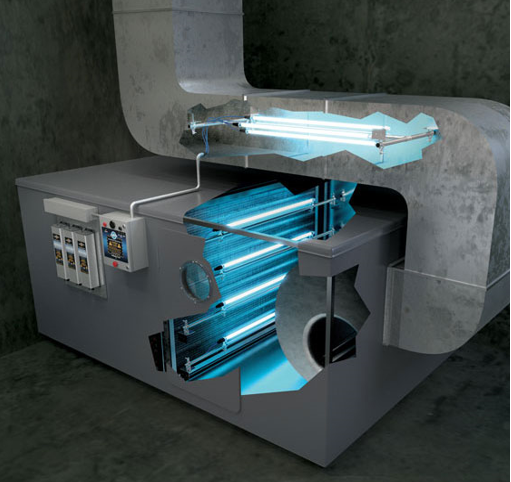The Need
Air is flowing through your building constantly — cycling through multiple times per hour. Viruses, germs and other microorganisms can be cycled right along with it — and that’s a risk in today’s climate.

Breathe Cleaner Air
Air is flowing through your building constantly — cycling through multiple times per hour. Viruses, germs and other microorganisms can be cycled right along with it — and that’s a risk in today’s climate.

Mathias Environmental employs a multidisciplinary approach and a multifaceted solution analysis that we implement based on your needs and goals. Our solutions are based on science; they are measurable, confirmable, efficient, and effective. Potential solutions include: UVC, Advanced Air Filtering, Bipolar Ionization, Outdoor Air Enhancement, Airflow Management & Controls and Scheduling.

There are a lot of companies offering solutions and equipment in the market, but very few understand the science and can tailor the RIGHT solution to each unique condition and space. Mathias understands the science, the technology and has over 25 years of experience with design, construction, maintenance and management of buildings and building mechanical systems. It is the difference between getting "something" and getting something you understand will be effective and practical.

Mathias Environmental provides expertise to commercial and public facilities to evaluate, design and implement effective indoor air quality strategies to battle the spread of pathogens. These include the SARS-CoV-2 novel coronavirus and the H1N1 Flu virus. Our mission is to significantly improve the indoor air quality in our clients’ facilities and help protect those that use them.
UV light breaks down bacteria, viruses, molds, and other pathogens by damaging their DNA makeup, which is the fundamental building block of the microorganism. This leads to the eventual death of the microorganism and renders viruses inactive. The exact type of light most effective is UVC at a wavelength of approximately 254 nanometers. The UV process is a physical, as opposed to a chemical, process. UVC destroys or inactivates viruses and microorganisms without chemically or physically impacting the indoor environment. In order to be effective at a meaningful level in typical mechanical systems or dynamic room environments, The UVC intensity must be significant and designed properly. This can be properly calculated and measured and is generally several orders of magnitude higher than many "off the shelf" products being sold today.
Bipolar Ionization and/or Photocatalytic Oxidation is typically integrated into the HVAC system to distribute vast numbers of charged ions or radicals that attach themselves to viruses, bacteria, mold and other types of particles and render them harmless by changing their physical/chemical structure. It also can cause very small particles to stick together to drop to the ground or allow your filtration system to be more effective in removing them from the air. While this technology has been employed for many years, it is still considered an emerging technology for pathogen treatment in the air stream. BPI & PCO's impact on indoor air quality is variable and difficult to measure. Its use should be carefully considered based upon the specific space, function, occupancy and other critical conditions.
Designing and placing advance air filter technology into your existing system adds another level of effectiveness or another type of approach. There are various filter types and approaches that can be considered, and some can capture up to 99% of airborne contaminants, including viruses and virus-laden particles. Your unique building and HVAC system will be thoroughly evaluated for this option by our team.
Adding additional outdoor air into your indoor air environment is recommended by the CDC to improve indoor air quality and protect against the novel coronavirus and other airborne pathogens. Large increases in "fresh" air into your system is, perhaps, the most aggressive means of treating indoor air quality and can offer a highly effective solution. It is a solution that must be considered and implemented carefully and properly.

Our approach, our team, and our ability to measure and certify results makes our solutions attractive for a wide range of buildings. Not only are we focused on providing solutions that are safe and efficient, but our clients can easily share these meaningful air quality improvements with those they are working hard to protect. This demonstrates an obvious level of care and concern in terms of health and safety.
Our advantages include:
